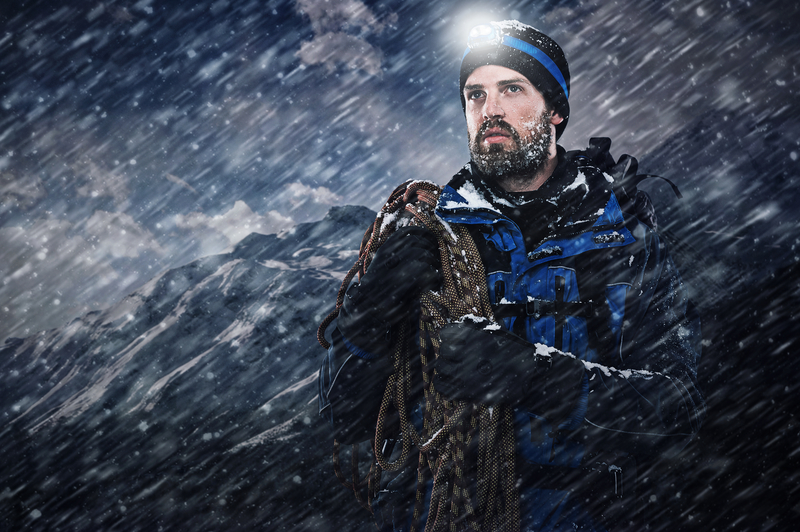Survival myths abound; that is a fact of life.
Unfortunately, some can kill you, while others will merely make you sick or injure you; here are a few.
MYTHS ABOUT THE COLD
Rub frostbitten skin
Don’t. Ever. Frostbite occurs when ice crystals form in your skin and other tissues. Rubbing the injury causes more tissue damage as the ice crystals lacerate new cells. Instead, treat the victim with painkillers as you slowly rewarm the tissue—frostbite hurts!Drinking liquor will warm you up
We’ve probably all seen the cartoon depicting a Saint Bernard dog with a cask of brandy around his neck reviving some avalanche victim. But liquor is the last drink you need in a cold-weather survival scenario. Although you may feel warmer, alcohol actually dilates skin-surface blood vessels and capillaries, which will chill your core even faster. Instead, drink hot tea or cocoa.MYTHS ABOUT WILD ANIMALS
Eating raw meat and seafood is safe
Not really. We’ve all seen the survival show with a charismatic host scarfing down some poor live animal. This may be safe once in a while, but it’s hardly a technique to emulate. Raw animal flesh can contain pathogens that may attack the human body, resulting in an extended-onset condition that’s difficult to diagnose. What about sushi, you say? Plenty of folks eat raw fish and don’t seem to get sick. Some raw seafood that comes from saltwater is safe for human consumption, but it’s only because their pathogens aren’t very compatible with the human body. The worms in sushi and the bacteria in oysters aren’t usually the right species to take up residence in a human host. Play it safe: Kill it and cook it before you eat it.
MYTHS ABOUT NAVIGATION
Moss grows on the north side of trees
Despite the many cartoons and pop-culture references, moss doesn’t always grow on the north side of trees. In my area, I actually find more moss on the south side, because it’s sunnier and warmer there (a good recipe for plant growth). Depending on the moss species and the local climate, moss will grow where conditions are most suitable.
You’ll never get lost with a GPS
If you can afford one, you should always take a GPS unit with you into the backcountry. These high-tech navigational tools are easy to use, and more important, they always let you know where you are. But they aren’t a fail-safe against getting lost. If you misplace or break the unit, or your batteries die, you’d better have a map and compass (and the knowledge to use them) as a backup.
MYTHS ABOUT SHELTER
A big fire beats a shelter
Large-log fires have kept people alive in the cold, but that doesn’t mean you can afford to skip building a shelter. What if it rains or becomes really windy? You never want to sleep out in the open if you can help it. Take the time to build a shelter. It will pay you back every time.
Lean-tos Make Great Shelters
Survival shows all use lean-tos because, frankly, they look cool. This type of shelter is fine for a woodshed or workshop, but it shouldn’t be your sleeping shelter. You need something with walls, a roof, and a small doorway to stay warm and dry.
MYTHS ABOUT FIRE
Wet matches work when dried
Nope. The chemicals in match heads are very vulnerable to moisture. On typical safety matches, the package will have a striking surface that is made from a gritty material such as powdered glass mixed with phosphorus. The head of the match is similarly made with grit, but it also contains sulfur and an oxidizer. When you strike a match, the friction of the glass powder grinding together creates a small amount of heat. This warmth converts the phosphorus into white phosphorus, which begins to catch fire. If match heads are exposed to enough moisture, the careful chemical balance is changed and they simply won’t light. Invest in some waterproof matches if you’re heading someplace wet. Or keep your matches in a waterproof container.
MYTHS ABOUT HYDRATION
Drink your own pee to stay hydrated
This question invariably comes up in my wilderness survival classes: “Can we drink urine?” My response: “You could, but why would you want to?” Urine is full of the body’s waste products. If conditions are grim enough to inspire you to consider urine as a beverage, then you are most likely severely dehydrated. The urine of a dehydrated person should not be reintroduced into the human body under any circumstances. Pee can be handy in other ways: Use it to dampen clothing for evaporative cooling in hot climates. But it’s not safe or smart to drink it.Eat snow for water
We all know not to eat yellow snow, but what about the white stuff? Bad move. There are four classes of snowflakes and many shapes these classes can assume. But they all contain more cold air than frozen water. In any volume of snow, the air-to-water ratio is about 9:1. This means you’d need to eat about 10 quarts of snow to yield one quart of water in your belly. Forget about brain freeze—this is core freeze. If it is cold enough for snow to be present, then it is cold enough for hypothermia. Always melt snow before drinking.
Chances are you have heard several of these myths and probably have heard a few for most of your life.
Each one, though, can severely reduce your chances of survival and in the most extreme cases, eliminate it.
To learn more about other myths regarding survival, check out Outdoor Life.

This is the kind of postings I love to see. Well informed, rational, and most importantly relevant!
MUCH better than seeing Colin Kaepernicks ugly mug for sure!!!!
Or political bs